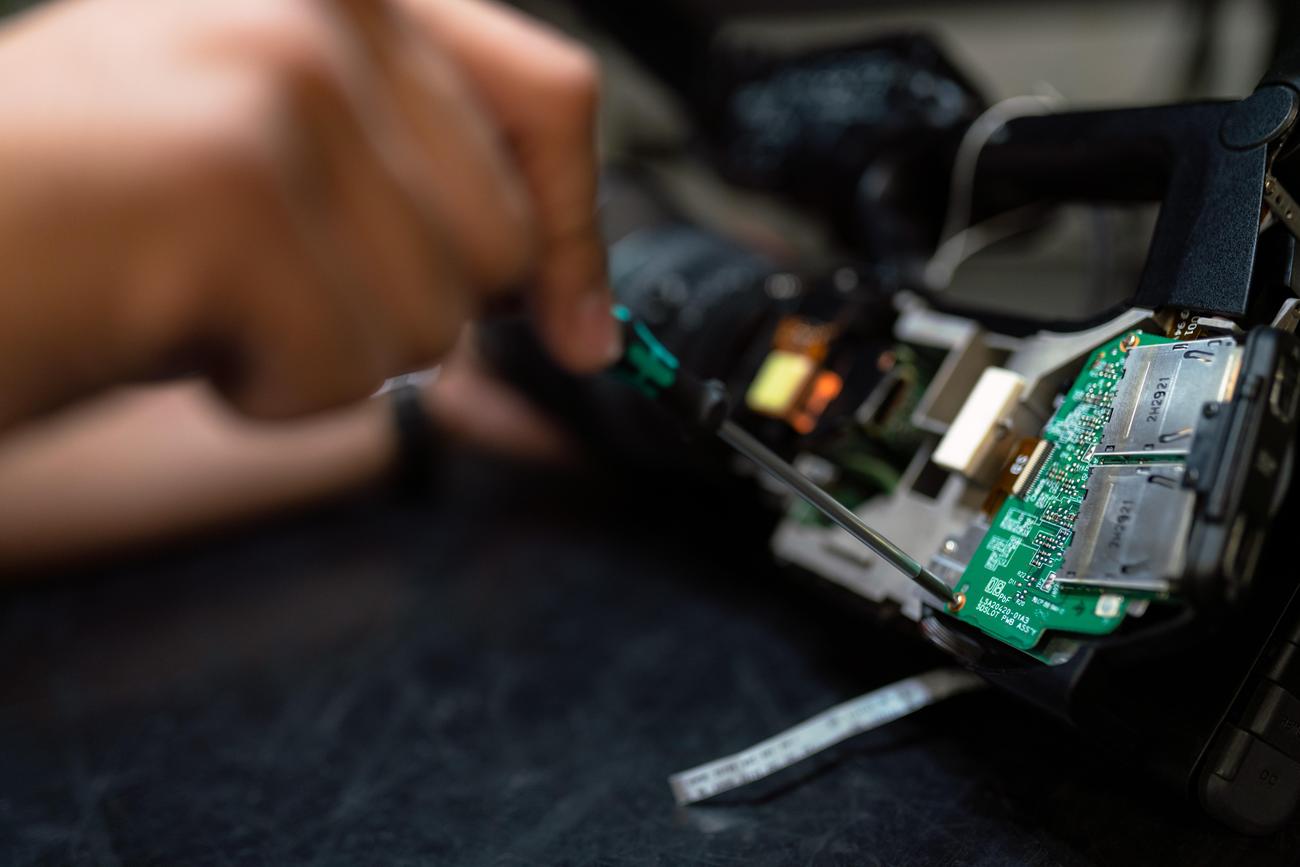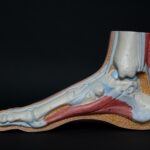Are you ready to dive into the fascinating world of orthopedics? Brace yourself for an article filled with intriguing insights and fun facts that will leave you marveling at the wonders of the human body. Join us as we unlock the secrets behind orthopedic conditions, treatments, and groundbreaking advancements. Whether you’re a medical enthusiast or simply curious about the wonders of the musculoskeletal system, this article is tailored to enthrall and enlighten readers of all backgrounds. So, put on your thinking cap and get ready for a thrilling journey into the realm of orthopedic fun facts!

Orthopedic Fun Facts
Orthopedics, the medical specialty dedicated to the treatment of musculoskeletal conditions, holds a treasure trove of fascinating insights. From its origins in pediatric care to the numerous areas it encompasses, let’s delve into some intriguing orthopedic fun facts that will broaden your understanding of this field.
1. Orthopedics: Improving Young Lives
Orthopedics initially emerged as a discipline focused on correcting deformities in children. Originating in France, it aimed to ensure that young ones could grow up with straight, healthy bones. Today, orthopedic doctors continue to play a vital role in treating children and adults alike, working to enhance mobility and restore function.
2. Versatility Among Orthopedic Specialists
Unlike some medical branches that require doctors to specialize in a particular area of the body, orthopedic doctors possess the flexibility to treat a range of musculoskeletal conditions. Whether it’s the knees, shoulders, or any other joint or bone, orthopedic specialists are equipped to address various orthopedic concerns.
3. The Multifaceted Nature of Orthopedics
While orthopedics is often associated with surgical procedures, it encompasses much more than that. Nonsurgical treatments, such as physical therapy, exercise regimens, and medication, form an integral part of orthopedic care. This holistic approach allows patients to explore all available options before resorting to surgery.
4. Knee and Shoulder: Orthopedic Focus Areas
When it comes to orthopedic care, knees and shoulders take the lead as the most frequently treated areas. The knees bear the brunt of our daily activities, making them prone to wear and tear, while shoulder injuries often result from overuse or trauma. Orthopedic doctors specialize in effectively diagnosing and treating these common concerns.
5. The Philosophy behind Orthopedics
Orthopedic care always places a great emphasis on exploring nonsurgical treatment options. Orthopedic doctors explore conservative approaches to alleviate pain and improve quality of life before considering surgical intervention. This philosophy ensures that patients receive the most appropriate and least invasive treatment for their conditions.
6. Uncovering the Origins of “Orthopedia”
The term “orthopedia” finds its roots in ancient Greece, where “orthos” meant “straight and free from deformity,” and “paidios” referred to a “child.” Thus, orthopedics can be understood as the pursuit of helping children grow and lead straight, healthy lives, fostering physical well-being and preventing deformities.
7. The Link between Cardiovascular Disease, Diabetes, and Amputations
Shocking as it may be, approximately 75% of all amputations stem from cardiovascular diseases or type 2 diabetes. These conditions can lead to poor circulation and compromised blood flow to the extremities, making amputation necessary in extreme cases. Orthopedic specialists play a vital role in the rehabilitation and prosthetic fitting for individuals who have undergone an amputation.
8. Below-Knee Amputation: The Most Common Type
Among different types of amputations, below-knee amputation stands as the most prevalent. This procedure involves the removal of the leg below the knee joint. By addressing severe lower limb conditions, below-knee amputations can significantly improve the quality of life for individuals facing mobility challenges.
9. Orthopedic Procedures: Primarily Performed by Private Clinics
Orthopedic surgery is mainly carried out by private clinics in the United States. These specialized healthcare facilities offer a wide range of services, ranging from diagnostic consultations to surgical interventions and postoperative care. The expertise, efficiency, and dedication of the orthopedic teams in these clinics contribute to successful treatment outcomes.
10. The Incredible Complexity of the Human Spine
Did you know that the human spine is incredibly flexible and hosts over 120 muscles? Besides its supporting role in maintaining an upright posture, the spine acts as an intricate network of ligaments, joints, and muscles that facilitate a wide range of movements. The spine truly is a marvel of anatomical engineering.
11. Posture and Constipation: An Unexpected Connection
Contrary to what one might expect, poor spinal posture while sitting on the toilet can lead to constipation. Leaning too far forward or sitting with a rounded back can compress the abdomen, making it difficult for the digestive system to function optimally. Maintaining good posture even during seemingly mundane activities can profoundly impact our overall well-being.
12. Slouching and Bladder Pressure
Slouching or adopting poor posture can inadvertently place pressure on the bladder. This increased pressure can contribute to various bladder issues, such as incontinence or a heightened need to urinate frequently. A conscious effort to maintain proper posture can help mitigate these concerns and promote optimal bladder function.
13. The Complex Anatomy of the Human Spine
With around 220 ligaments, 100 joints, and 120 muscles, the average human spine possesses an impressive degree of complexity. These interconnected elements work harmoniously to support the body, facilitate movement, and protect the delicate spinal cord. The study of orthopedics allows us to appreciate the intricacies of this remarkable structure.
14. Giraffes and Human Necks: A Commonality
Giraffes, known for their long necks, interestingly share a similarity with humans in this regard. Just like us, giraffes have seven cervical vertebrae in their necks, albeit considerably elongated. Despite the substantial difference in size, this shared anatomical feature highlights the evolutionary unity among diverse species.
15. Orthopedic Procedures: Majority Performed in Private Clinics
In the realm of orthopedic procedures, private clinics take the reins, accounting for approximately 81% of all surgeries performed in the United States. These clinics provide specialized care, efficient scheduling, and personalized attention to patients, ensuring the best possible outcome for individuals seeking orthopedic treatments.
In conclusion, exploring the realm of orthopedics unveils a captivating world of fun facts and insights. From the historical origins of the field to the diverse nature of treatments and fascinating aspects of human anatomy, orthopedics offers a plethora of knowledge to enrich our understanding of musculoskeletal health. So let’s continue our journey of discovery by delving deeper into the realm of orthopedics.
“Orthopedics: where historical roots intertwine with cutting-edge treatments, paving the way for straight paths and pain-free lives.”
Fun facts about orthodontics are a treasure trove of intriguing information that will leave you amazed! Did you know that orthodontic treatment can not only straighten your teeth, but also improve your overall oral health? It’s true! With advancements in technology, orthodontics has become more efficient and comfortable than ever before. Whether you’re curious about the history of braces or want to learn about the latest innovations in orthodontic care, our website is the ultimate destination. Click here for a fascinating journey through the world of orthodontics: fun facts about orthodontics. Prepare to be surprised and enlightened!
Orthopedic fun facts are always fascinating to learn about, but have you ever wondered about the history of orthodontic treatments? Delve into the captivating world of Orthodontic treatments history and discover how this field has evolved over the years. From the ancient Egyptians using metal bands to straighten teeth to modern-day braces and aligners, the journey of orthodontics is truly remarkable. Click here to explore more about the history of orthodontic treatments: Orthodontic treatments history.
Now, let’s talk about something we all might experience at some point in our lives – braces! Did you know that there are different types of braces available? Each type has its own unique features and benefits. Whether it’s traditional metal braces, discreet ceramic braces, or the latest innovation of invisible aligners, understanding the different types of braces can help you make an informed decision. Explore more about these exciting options and find the perfect fit for your orthodontic journey: Different types of braces.
While orthodontic treatments are primarily focused on enhancing the appearance of teeth, they also play a significant role in maintaining oral health. Proper alignment of teeth can have a positive impact on your overall oral health, making it easier to clean and preventing various dental issues. Discover the connection between orthodontics and oral health, and how a beautiful smile can lead to a healthier mouth. Click here to unravel the fascinating link between orthodontics and oral health: Orthodontics and oral health.
Let’s continue to explore the captivating world of orthopedic fun facts while also learning about the history of orthodontic treatments, understanding different types of braces, and discovering the importance of orthodontics for oral health.
Are Orthopedic Surgeons Really Stupid?
[youtube v=”vlTERDA0YH4″]
Stereotypes vs. Reality: Debunking Misconceptions About Orthopedic Surgeons
In the medical field, there has been a longstanding stereotype that orthopedic surgeons are strong but lacking in intelligence. They are often portrayed as individuals who solely rely on screws to fix bones and have a limited understanding of the human body. This perception has been particularly propagated by anesthesiologists who witness orthopedic surgeons’ work on a daily basis. However, is there any truth to these claims?
To investigate this stereotype, a study was conducted comparing the physical strength and intelligence of orthopedic surgeons and anesthesiologists. The study found that orthopedic surgeons had significantly higher grip strength and intelligence scores compared to their anesthesiologist counterparts. This debunked the prevailing notion that orthopedic surgeons are as dumb as they are strong.
Interestingly, orthopedic surgeons themselves predicted that anesthesiologists would outperform them in terms of intelligence. However, the study’s findings proved otherwise, indicating that anesthetists should tread more carefully when mocking their orthopedic colleagues. One could argue that a crushing handshake may be in store for them at the next medical meeting.
While this study served as a response to the widespread misconceptions about orthopedic surgeons, it is worth noting that the intelligence and expertise of these professionals should never be undermined. Orthopedic surgeons possess extensive knowledge and training, allowing them to treat a wide range of musculoskeletal conditions in both children and adults.
Orthopedic care is not limited to surgical interventions, but also includes non-surgical treatments such as physical therapy and medication. The field prioritizes exploring nonsurgical options before considering surgery, highlighting their commitment to the overall well-being of patients.
When it comes to specific areas of focus, knees and shoulders are the most frequently treated areas in orthopedic care. However, these surgeons are skilled in treating various other musculoskeletal issues as well.
The term “orthopedia” originates from ancient Greece and reflects the field’s dedication to helping children grow with healthy bones. Orthopedic surgeons are instrumental in correcting deformities in children and continue to play a vital role in their treatment.
It is also important to note that orthopedic surgeries are primarily performed by private clinics. These experts utilize their extensive knowledge of the complex human spine, consisting of over 120 muscles, ligaments, and joints. Maintaining proper spinal posture is crucial, as poor alignment can lead to issues like constipation or bladder complications.
Furthermore, orthopedic surgeons make invaluable contributions in the field of amputations, particularly for individuals with conditions such as cardiovascular disease or type 2 diabetes. Below-knee amputation is the most common type and can significantly enhance the quality of life for those with lower limb conditions.
In conclusion, the traditional stereotype of orthopedic surgeons as strong yet unintelligent individuals is unfounded. The study’s findings have debunked these misconceptions, showcasing the exceptional physical strength and intelligence that orthopedic surgeons possess. It is essential to recognize and appreciate the expertise of these professionals who play a pivotal role in treating musculoskeletal issues and helping patients regain their quality of life.
“Orthopedic surgeons possess extensive knowledge and training, allowing them to treat a wide range of musculoskeletal conditions in both children and adults.”
“The study’s findings have debunked these misconceptions, showcasing the exceptional physical strength and intelligence that orthopedic surgeons possess.”

FAQs
Q: What is the origin of orthopedics?
A: Orthopedics originated in France with a focus on correcting deformities in children.
Q: Are orthopedic doctors specialized in treating specific body parts?
A: No, orthopedic doctors do not have a requirement to specialize in treating one specific part of the body.
Q: Is orthopedics only related to surgery?
A: No, orthopedics is more than just surgery and includes nonsurgical treatments as well.
Q: What are the most common areas of the body treated by orthopedic doctors?
A: The most common areas of the body treated by orthopedic doctors are knees and shoulders.
Q: Are nonsurgical treatments considered in orthopedics?
A: Yes, nonsurgical treatment options are always considered in orthopedics.
- Jerry McSorley’s Post-Divorce Life: New Beginnings - July 16, 2025
- The Rise and Fall of the New Haven Nighthawks: A Minor League Hockey Legacy - July 16, 2025
- Unlock Jerry McSorley’s Career Highlights: Eye Tax Inc.’s Solar Success - July 16, 2025
















